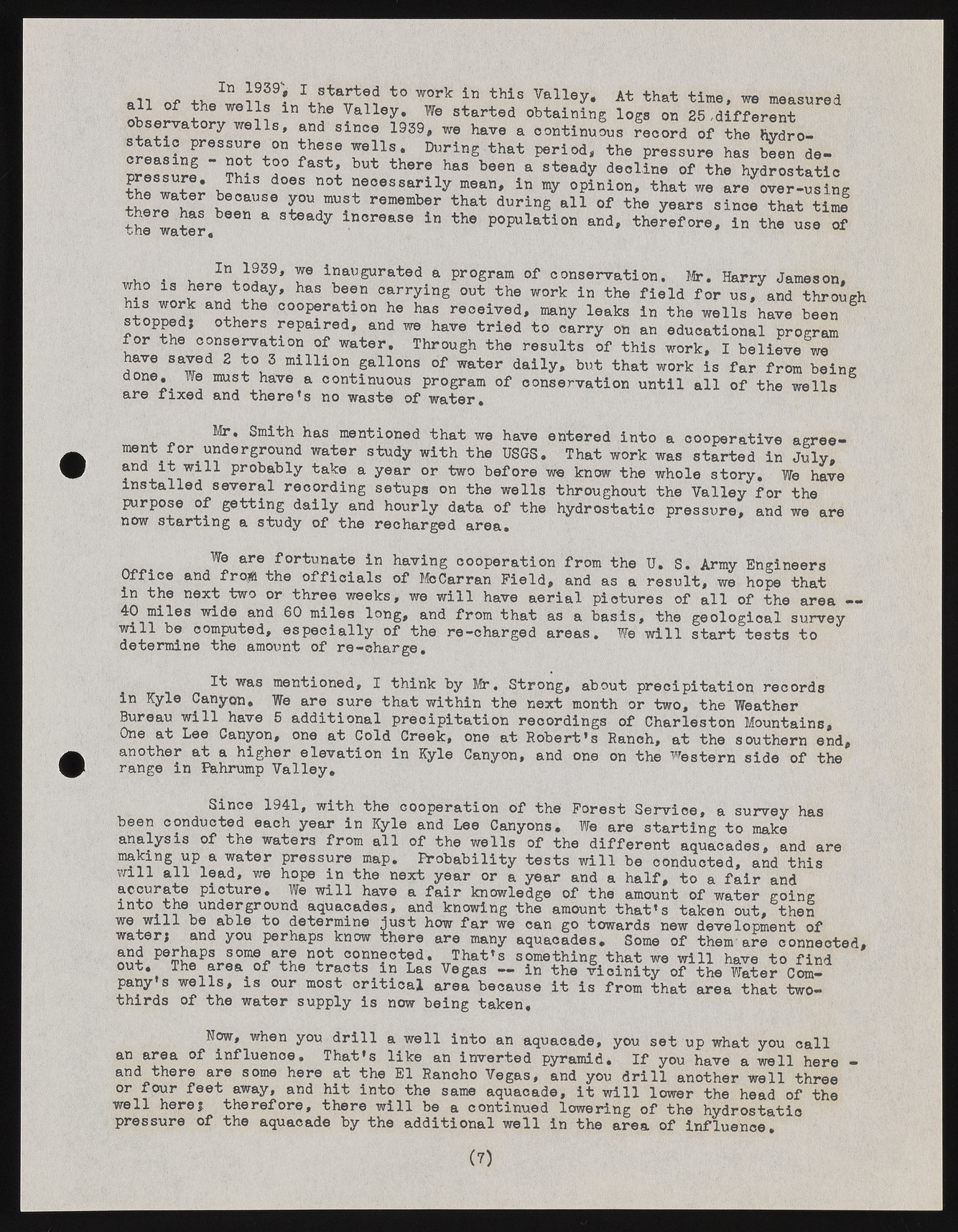Copyright & Fair-use Agreement
UNLV Special Collections provides copies of materials to facilitate private study, scholarship, or research. Material not in the public domain may be used according to fair use of copyrighted materials as defined by copyright law. Please cite us.
Please note that UNLV may not own the copyright to these materials and cannot provide permission to publish or distribute materials when UNLV is not the copyright holder. The user is solely responsible for determining the copyright status of materials and obtaining permission to use material from the copyright holder and for determining whether any permissions relating to any other rights are necessary for the intended use, and for obtaining all required permissions beyond that allowed by fair use.
Read more about our reproduction and use policy.
I agree.Information
Digital ID
Permalink
Details
Member of
More Info
Rights
Digital Provenance
Publisher
Transcription
, , : i .. In ^ 39f \ fta rte d to work in this V alley. At that time, we measured a ll of the w ells m the V alley. We started obtaining logs on 25 .different observatory w ells, and since 1939, we have a continuous Record of the h y p osta tic pressure on these w e lls. During that period, the pressure has been de- P e s s P f ~ TM faSti bUt ther® haS bQ0n a steady decline of the hydrostatic the w atP h I P 3 d0SS n0t ?eoessarily mean» in opinion, that we are over-using th erl P s I l f J rememb?r that durinS a11 o f the years since that tim f the water.b & ****** itlCr9aSe in the P°Pu lation and, therefore, in the use of v, • u In, 1939’ inaugurated a program of conservation. Mr. Harry Jameson, who is here today, has been carrying out the work in the fie ld fo r us, and through his work and the cooperation he has received, many leaks in the w ells have been stopped; others repaired, and we have tried to carry on an educational program fo r the conservation of water. Through the results of this work, I believe we ba3J SaJred 2 b° 3 m illion gallons of water d a ily, but that work is fa r from being done. We must have a continuous program of conservation u n til a ll o f the wells are fixed and there’ s no waste of water. Mr. Smith has mentioned that we have entered into a cooperative agree- TneP , f ° r .? ? dergr0und Wat6r study with the USG5» That work w&and i t w ill probably take a year or two before we know the whso les tasrtoterdy . inW Je uhlayv, e in stalled several recording setups on the w ells throughout the Valley fo r the purpose of getting daily and hourly data of the hydrostatic pressure, and we are now starting a study of the recharged area. We are fortunate in having cooperation from the U. S. Army Engineers Office and fra$ the o ffic ia ls of McCarran Field, and as a resu lt, we hope that in the next two or three weeks, we w ill have aerial pictures of a ll of the area — 40 miles wide and 60 miles long, and from that as a ba sis, the geologioal survey w ill be computed, esp ecially of the re-charged areas. We w ill start tests to determine the amount of re-charge. It was mentioned, I think by Mr. Strong, about precipitation records in Kyle Canyon, We are sure that within the next month or two, the Weather Bureau w ill have 5 additional precipitation recordings of Charleston Mountains, One at Lee Canyon, one at Cold Creek, one at Robert’ s Ranch, at the southern end, another at a higher elevation in Kyle Canyon, and one on the Western side of the range in Fahrump V alley. Since 1941, with the cooperation of the Forest Service, a survey has been conducted each year in Kyle and Lee Canyons. We are starting to make analysis of the waters from a ll of the w ells of the differen t aquacades, and are making up e water pressure map. Probability tests w ill be conducted, and this w ill a ll lead, we hope in the next year or a year and a h a lf, to a fa ir and accurate picture. We w ill have a fa ir knowledge of the amount of water going into the underground aquacades, and knowing the amount that’ s taken out, then we w ill b© able bo d©b©rmin© jusb how fa r wo can go bowards now dovelopmonb of waber; and you perhaps know bhere are many aquacades* Some of bhemare connecbed. out. The area o f art®h e tracctosn nienc tLeads. VTeghaast ’—s soinm etthhei nvg icthinaitt yw e owf itlhl e hWavaet etro Cfoimnd pany’ s w ells, is our most c r it ic a l area because i t is from that area that two-thirds of the water supply is now being taken. Now, when you d r ill a w ell into an aquacade, you set up what you ca ll an area of influence. That’ s like an inverted pyramid. I f you have a w ell here - and there are some here at the El Rancho Vegas, and you d r il l another w ell three or four fe e t away, and h it into the same aquacade, i t w ill lower the head of the w ell here; therefore, there w ill be a continued lowering o f the hydrostatic pressure of the aquacade by the additional w ell in the area of influence. (7)

